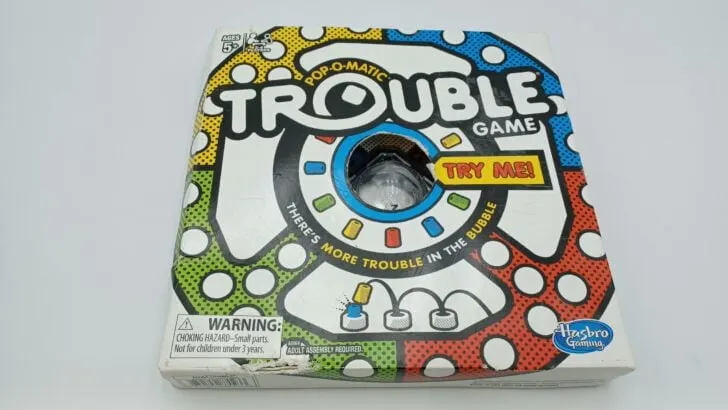Looking for a specific Trouble rule?: | Setup | Playing the Game | Moving Your Pegs | Landing On Another Peg | Double Trouble Space | Reaching the Finish | Winning the Game | FAQ | Components |
Objective of Pop-O-Matic Trouble
The objective of Trouble is to be the first player to get all four of your pegs to the Finish zone.
Note: The rules for Trouble have changed over the years. I will address rule changes between versions in the appropriate sections below.
Setup For Trouble
- Each player chooses a color and places their pieces in their Home spaces. If there are only two players, each player could decide to play as two different colors.
- In newer versions of the game, the youngest player starts the game. In older versions of Trouble all of the players pop the dice. The player who pops the highest number starts the game. Play passes to the left/clockwise in all versions of the game.
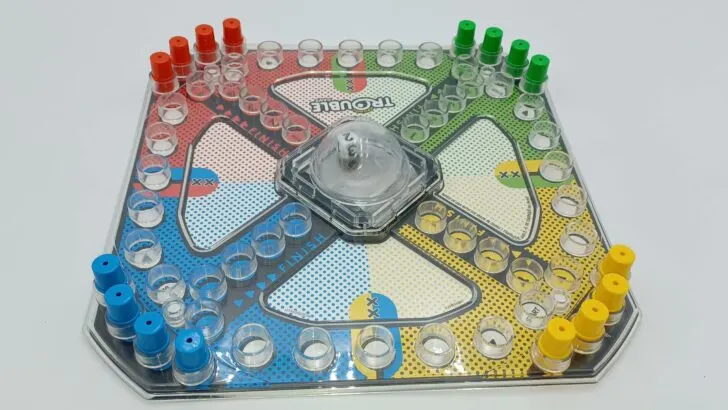
Playing Trouble
You will start your turn by pressing the Pop-O-Matic die roller in the middle of the gameboard. The number on the die determines what you will do for the rest of your turn.
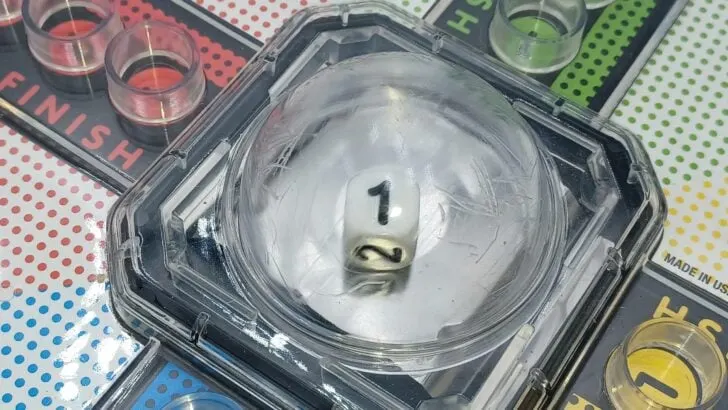
1
In older versions of Trouble a one can only be used to move one of your pieces forward one space along the gameboard.
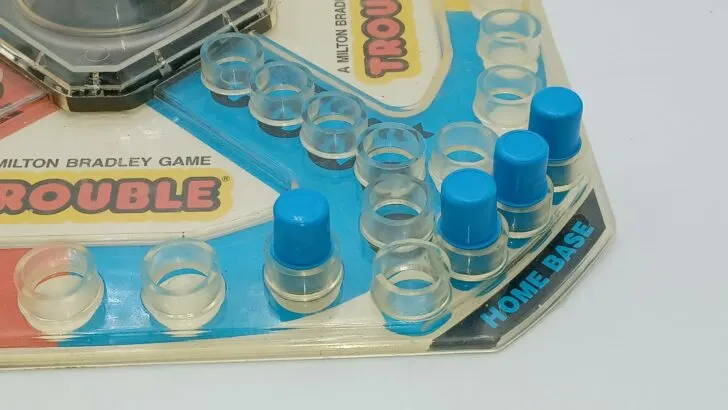
In newer versions of Trouble there is a unique rule for ones. When you roll a one, you do nothing on your turn. All of the other players get to take one of their pegs out from Home and move it to the Start space. If a player already has one of their own pegs on the Start space, they do not get to take out a peg. If an opponent’s peg is on their Start space, the opponent’s peg is sent back to Start.
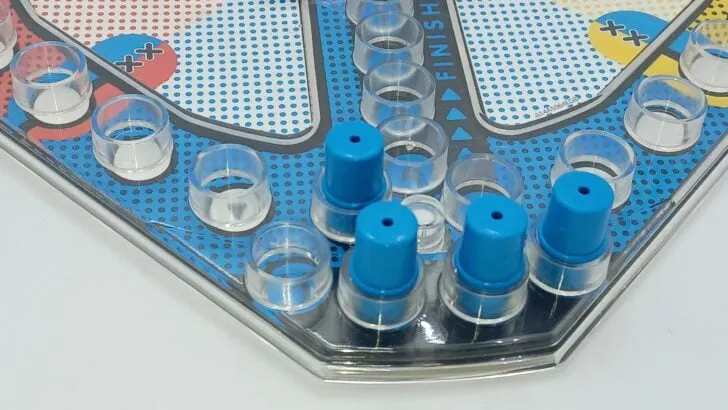
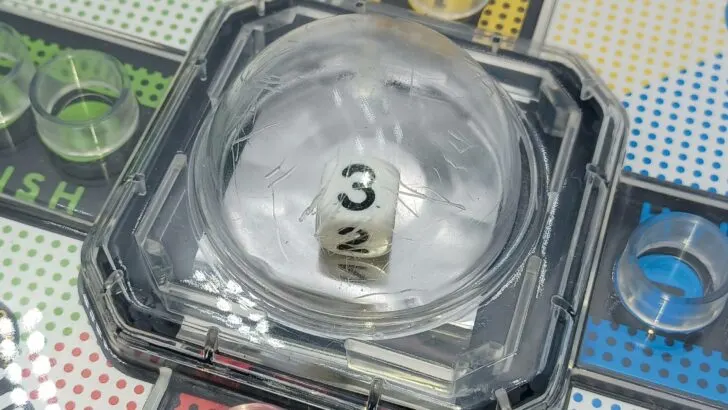
2-5
If you roll a two, three, four, or five; you will move one of your pegs forward the corresponding number of spaces on the board.
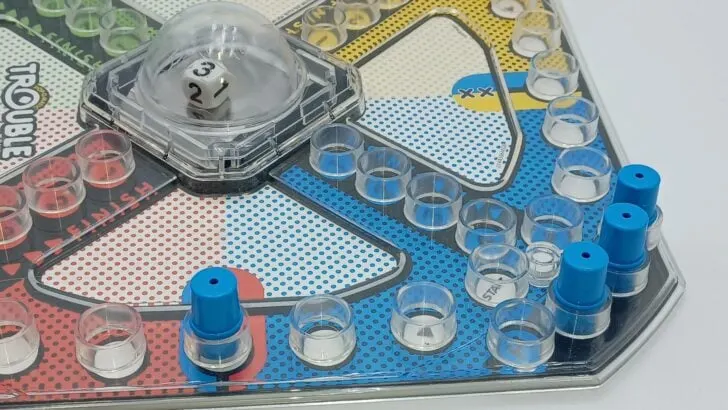
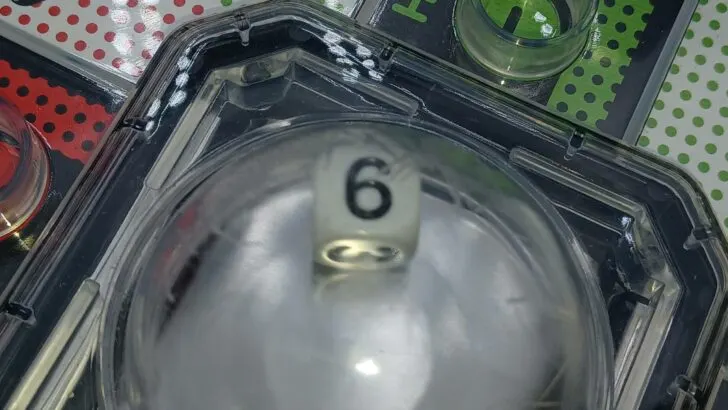
6
When you roll a six, you can choose one of two options.
First you can take one of your pegs out from Home and move it to the Start space. You will then pop the die again and take another turn. If one of your pegs are on your Start space, you cannot take another peg out. If an opponent’s peg is on your Start space, you will send them back to their own Home.
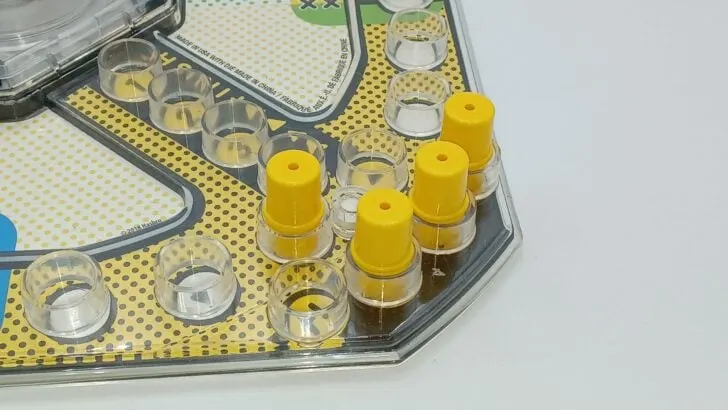
Your other option is to move one of your pegs forward six spaces around the gameboard.
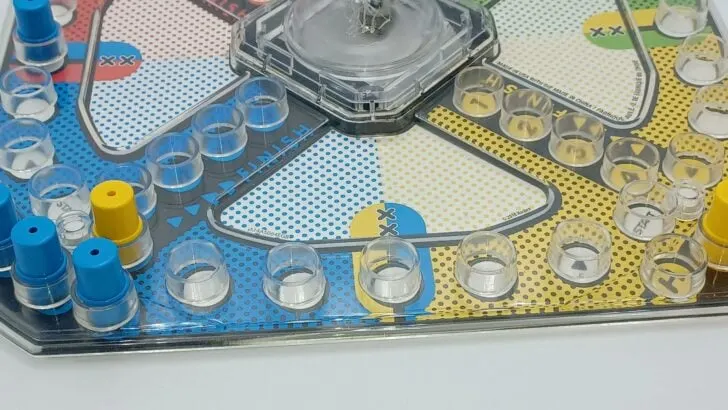
No matter which option you chose to take, you get an additional turn. Pop the Pop-O-Matic die again and take the corresponding action. If you roll a six again, you do not get an extra turn (third turn).
Moving Your Pegs
You will use most numbers to move one of your playing pieces forward clockwise the corresponding number of spaces around the board. You will count empty and occupied spaces while moving your peg.
To move a peg it needs to be moved from a Home space to the Start space. Once a peg is on the gameboard, you will move it around the gameboard.
If you roll a movement number and you don’t currently have any pegs on the gameboard that you can move, you forfeit your turn.
Landing On Another Peg
While moving you will occasionally land on a space that is already occupied by another peg.
If the space is occupied by another of your own pegs, you cannot move to that space. You must move a different peg. If you cannot move another peg, you forfeit your turn.
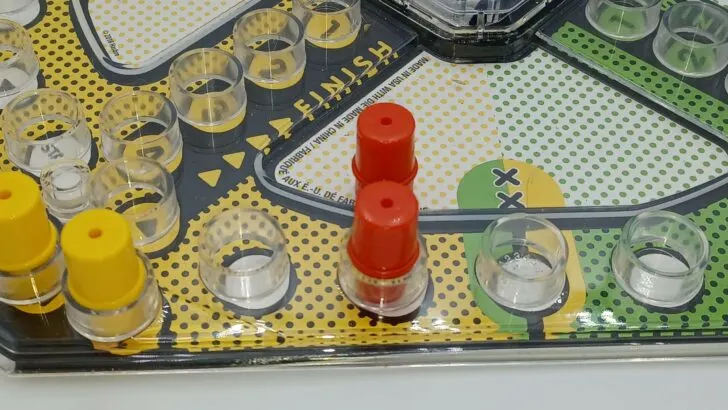
If an opponent’s peg is on your Start space and you decide to move one of your pegs from Home to your Start space, you will send their peg back to their Home space.
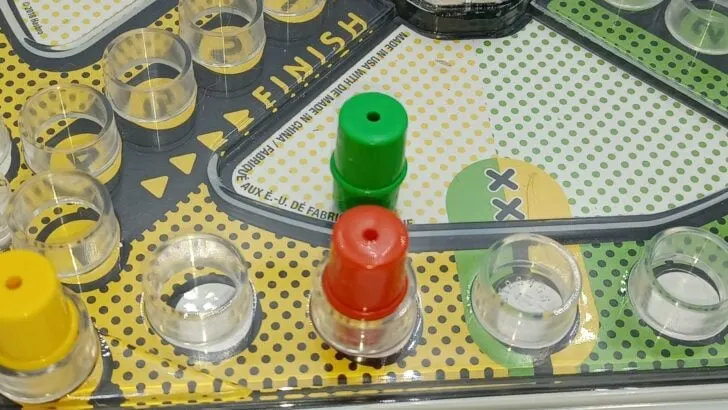
Should you land on an opponent’s peg, you will remove their peg from the space and insert your own peg. You will then move the opponent’s peg back to its Home space.
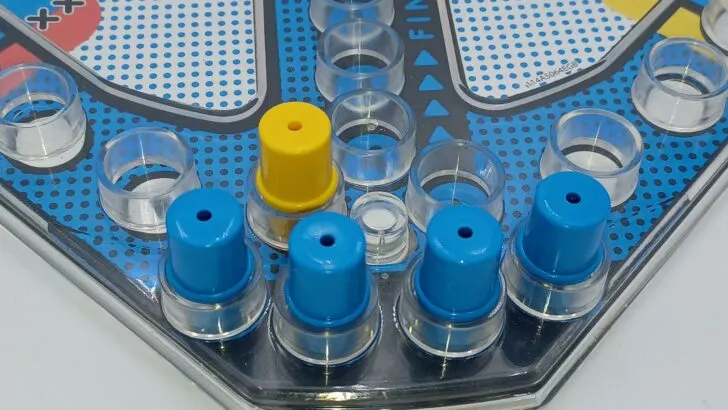
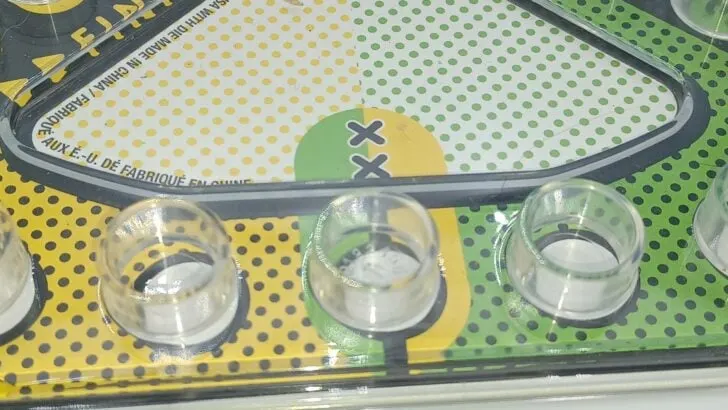
Landing On A Double Trouble Space
In newer versions of Trouble there is a unique space called the Double Trouble space. These spaces are where two different colors on the board meet.
When you land on a Double Trouble space, you will get to take another turn. If you landed on the space using a six, you only get one additional turn instead of two.
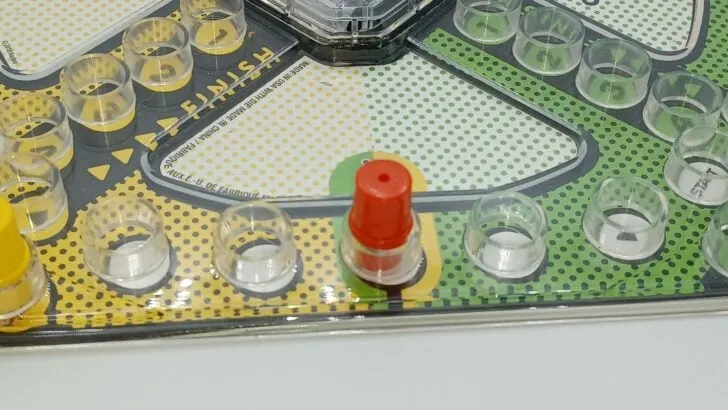
Reaching the Finish Space
Throughout the game you will move your pegs clockwise around the gameboard. Once you return to your starting section of the gameboard, you will stop moving clockwise. Instead you will move your peg into the Finish zone. Once a peg reaches the Finish zone, it is safe for the rest of the game.
This is one of the areas where versions of Trouble can differ quite a bit.
In newer versions of the game you do not have to reach a Finish space by exact count. Once you reach the Finish zone (even if you have spaces left), you will place your peg in the Finish space closest to the Pop-O-Matic die popper.
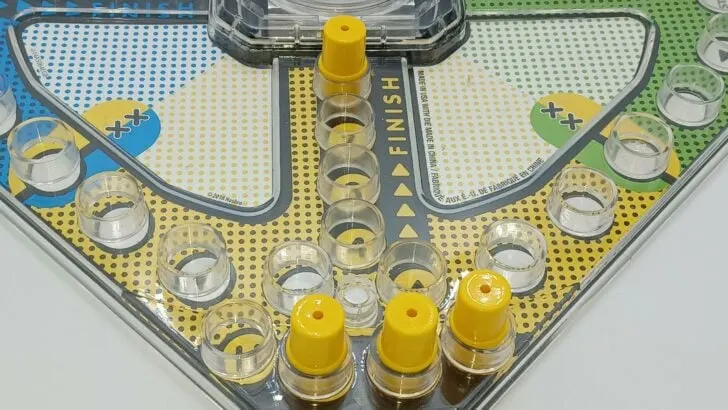
In older versions of Trouble you need to reach one of the Finish spaces by exact count. The peg stays in the space that it lands on unless you use a future move to move it further up the track. You may never move a peg down towards the main track. You cannot land on a Finish space that is already occupied by one of your other pegs.
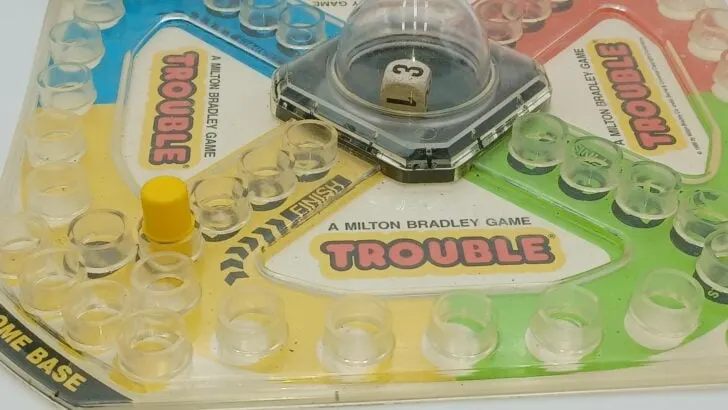
Winning Trouble
The first player to get all four of their pegs into their Finish zone wins Trouble.
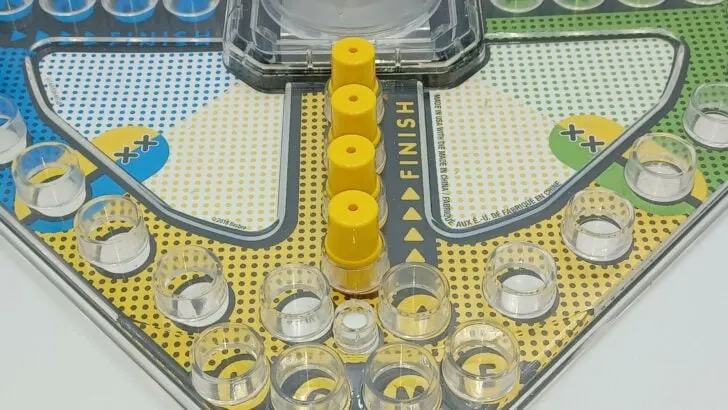
Trouble FAQ
If you have any questions about how to play Trouble, leave a comment below on this post. I will try to answer any questions asked as best and as quickly as possible.
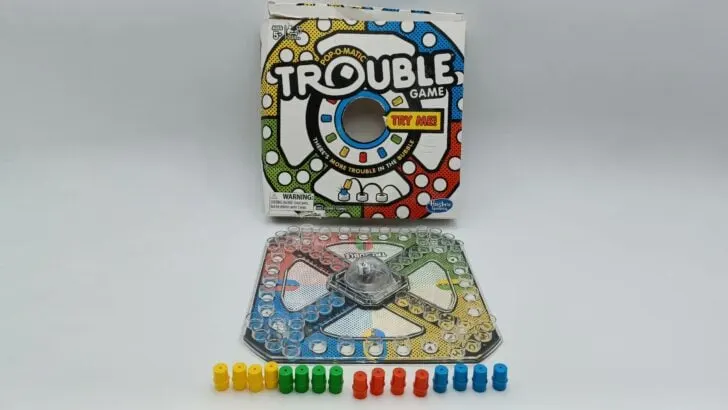
Components
- 16 pegs (4 of each color)
- Gameboard
- Instructions
Year: 1965 | Publisher: Gabriel, Hasbro, Kohner, Milton Bradley | Designer: Frank Kohner, Paul Kohner, Fred Kroll
Genres: Children’s, Roll and Move
Ages: 4+ | Number of Players: 2-4 | Length of Game: 30-45 minutes
Difficulty: Light | Strategy: Light | Luck: High
Where to Purchase: Any purchases made through these links (including other products) help keep Geeky Hobbies running. Thank you for your support.
For more board and card game rules/how to plays, check out our complete alphabetical list of card and board game rules posts.

